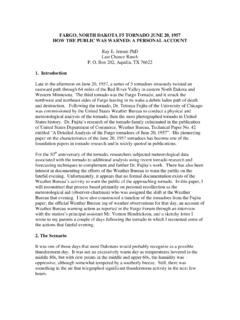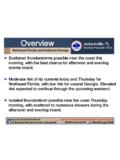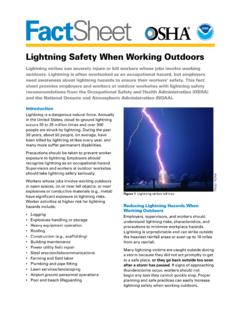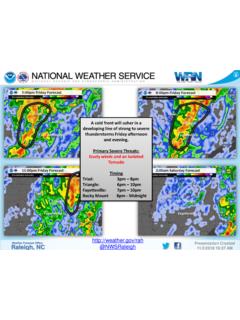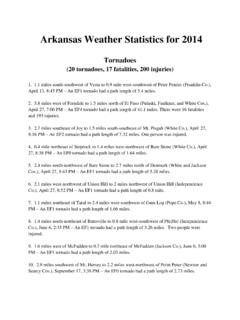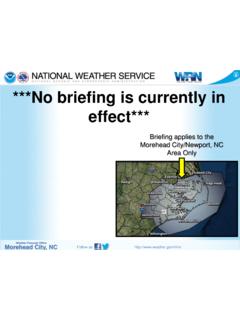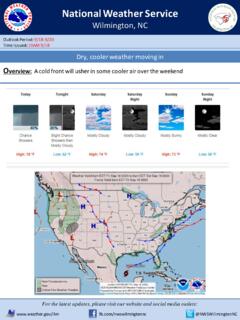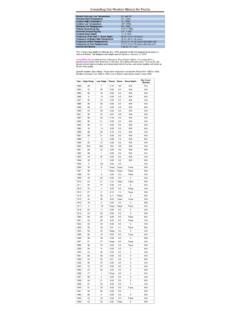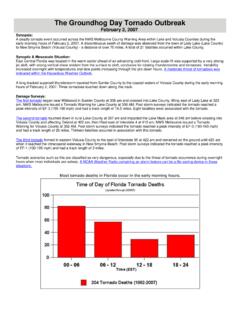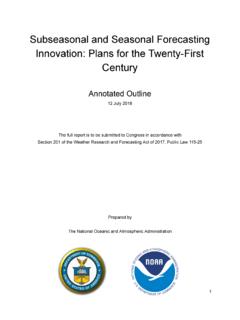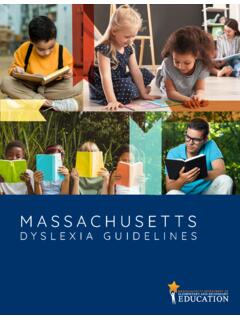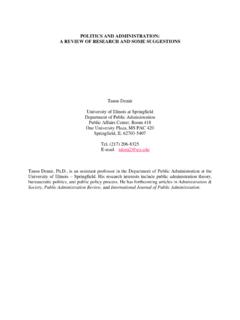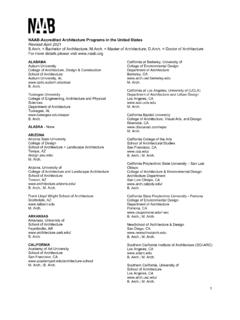Transcription of NWS Central Region Service Assessment
1 NWS Central Region Service Assessment Joplin, Missouri, Tornado May 22, 2011 DEPARTMENT OF COMMERCE National Oceanic and Atmospheric Administration National Weather Service , Central Region Headquarters Kansas City, MO July 2011 Cover Photographs Left: NOAA Radar image of Joplin Tornado. Right: Aftermath of Joplin, MO, tornado courtesy of Jennifer Spinney, Research Associate, University of Oklahoma, Social Science Woven into Meteorology. ii Preface On May 22, 2011, one of the deadliest tornadoes in United States history struck Joplin, Missouri, directly killing 158 people and injuring over 1,000.
2 The tornado, rated EF-5 on the Enhanced Fujita Scale, with maximum winds over 200 mph, affected a significant part of a city with a population of more than 50,000 and a population density near 1,500 people per square mile. As a result, the Joplin tornado was the first single tornado in the United States to result in over 100 fatalities since the Flint, Michigan, tornado of June 8, 1953. Because of the rarity and historical significance of this event, a regional Service Assessment team was formed to examine warning and forecast services provided by the National Weather Service .
3 Furthermore, because of the large number of fatalities that resulted from a warned tornado event, this Service Assessment will provide additional focus on dissemination, preparedness, and warning response within the community as they relate to NWS services . Service Assessments provide a valuable contribution to ongoing efforts by the National Weather Service to improve the quality, timeliness, and value of our products and services . Findings and recommendations from this Assessment will improve techniques, products, services , and information provided to our partners and the American public .
4 Lynn P. Maximuk Director, Central Region National Weather Service July 2011 iii Executive Summary On May 22, 2011, one of the most devastating tornadoes in the nation s history directly killed 158 people and injured over 1,000 in Joplin, Missouri. From a National Weather Service (NWS) perspective, this was essentially a warned event in that advance notice of the tornado was given, critical information was communicated and received, and most people sought the best shelter available to them. The timely actions of the weather enterprise (NWS, media, emergency management), and the eventual response of local businesses, churches, schools, and the general public undoubtedly saved many lives.
5 The NWS springfield Weather Forecast Office was well prepared and performed in an exemplary manner in both its provision of services and its application of scientific expertise. The professionalism and dedication of the staff members is clearly a credit to the communities they serve. Still, to learn what more can be done to help reduce fatalities from strong and violent tornadoes, the Assessment team examined relevant issues ranging from internal NWS warning operations to dissemination strategies to public warning response.
6 To help accomplish this, nearly 100 interviews were conducted in Joplin with tornado survivors, local businesses, media, emergency management, NWS staff, city officials, and others. Many of the key findings within this report involved societal aspects of warning response and risk perception. Responding to warnings is not a simple act of stimulus-response, rather it is a non-linear, multi-step, complex process. Relationships between false alarms, public complacency, and warning credibility are highly complex as well.
7 The majority of Joplin residents did not immediately take protective action upon receiving a first indication of risk (usually via the local siren system), regardless of the source of the warning. Most first chose to further assess their risk by waiting for, actively seeking, and filtering additional information before taking protective actions. The reasons for doing so were quite varied, but largely depended on an individual s worldview formed mostly by previous experience with severe weather. Most importantly, the perceived frequency of siren activation in Joplin led the majority of survey participants to become desensitized or complacent to this method of warning.
8 This suggests that initial siren activations in Joplin (and severe weather warnings in general) have lost a degree of credibility for most residents one of the most valued characteristics for successful risk communication. Instead, the majority of Joplin residents did not take protective action until processing additional credible confirmation of the threat and its magnitude from a non-routine, extraordinary risk trigger. This was generally achieved in different ways, including physical observation of the iv tornado, seeing or hearing confirmation, and urgency of the threat on radio or television, and/or hearing a second, non-routine siren alert.
9 This report suggests that in order to improve warning response and mitigate user complacency, the NWS should explore evolving the warning system to better support effective decision making. This evolution should utilize a simple, impact-based, tiered information structure that promotes warning credibility and empowers individuals to quickly make appropriate decisions in the face of adverse conditions. Such a system should: a. provide a non-routine warning mechanism that prompts people to take immediate life-saving action in extreme events like strong and violent tornadoes b.
10 Be impact-based more than phenomenon-based for clarity on risk Assessment c. be compatible with NWS technological, scientific, and operational capabilities d. be compatible with external local warning systems and emerging mobile communications technology e. be easily understood and calibrated by the public to facilitate decision making f. maintain existing probability of detection for severe weather events g. diminish the perception of false alarms and their impacts on credibility While the weather enterprise was generally successful in communicating the Joplin tornado threat in a timely manner, current communication and delivery mechanisms are not seamless and are somewhat antiquated.
